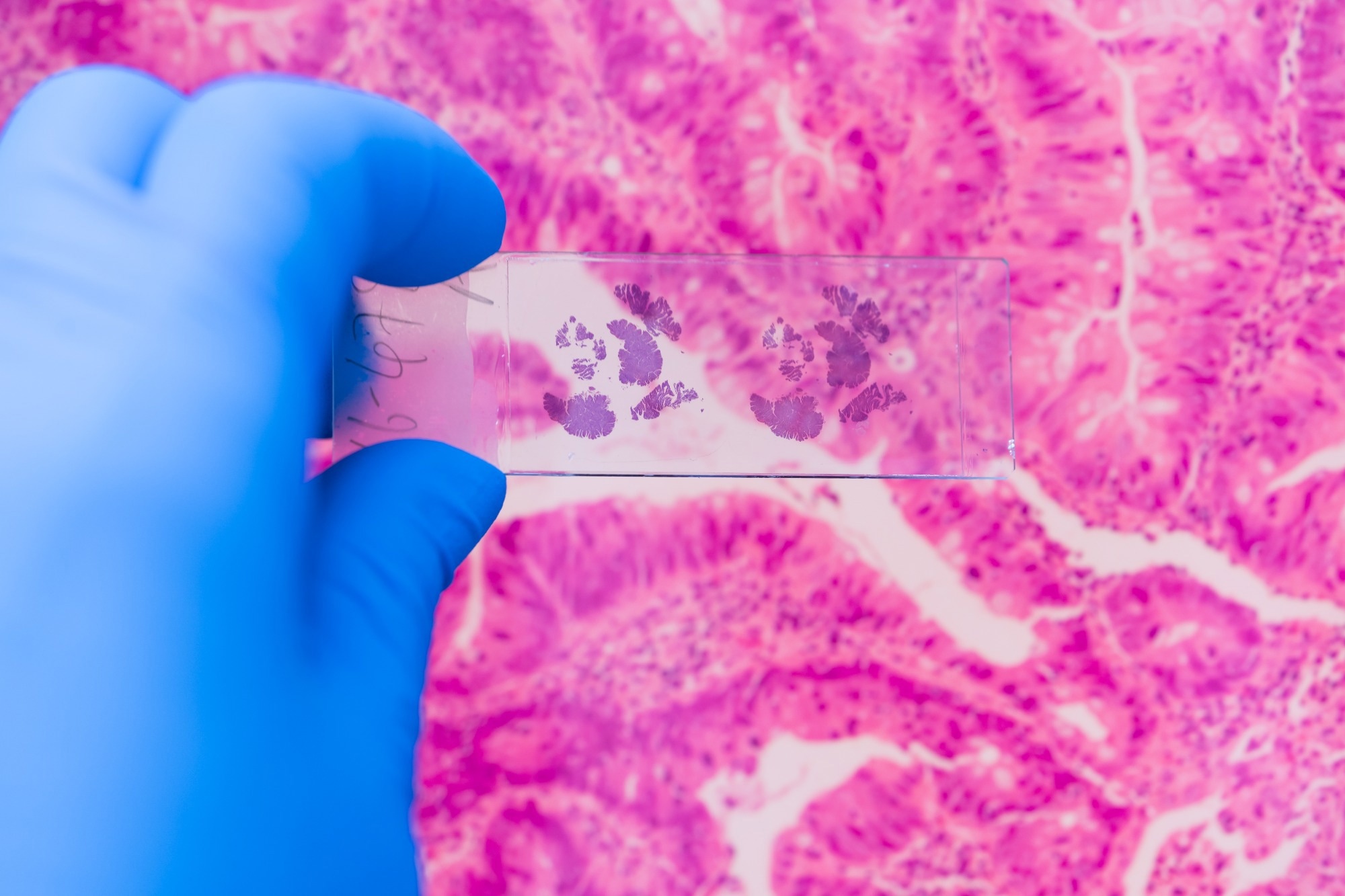Research suggests that tumor metastasis, or the spread of cancer cells from the original site to other parts of the body, is driven by conditions such as nutrient shortage, hypoxia, and interactions between tumor cells and surrounding stromal cells.
These factors arise deep within the tumor microenvironment, making it difficult to study the early metastatic changes.
In a recent study published in Life Science Alliance, a team of scientists from New York University’s Center for Genomics & Systems Biology developed a lab-based model that replicated the three-dimensional (3D) environment of tumors. This allowed scientists to observe the adaptations in tumor cells and the generation of invasive traits under ischemic conditions directly.
 Study: Direct visualization of emergent metastatic features within an ex vivo model of the tumor microenvironment. Image Credit: Komsan Loonprom/Shutterstock.com
Study: Direct visualization of emergent metastatic features within an ex vivo model of the tumor microenvironment. Image Credit: Komsan Loonprom/Shutterstock.com
Background
Metastasis is the leading cause of cancer-related mortality, and targeting tumor cells in the early stages before they become invasive could significantly reduce cancer mortality rates.
Although current research highlights the roles of deoxyribonucleic acid (DNA) damage, cell clusters, and interactions between tumor and immune cells in metastasis, observing these early metastatic changes directly continues to be difficult.
Furthermore, while organoid models can help simulate tumor biology, the deep ischemic conditions found in solid tumors, such as lack of nutrients and low oxygen conditions, have been difficult to replicate in organoids.
About the Study
The present study aimed to develop an ex vivo model that could mimic the pre-metastatic tumor microenvironment, incorporating factors such as hypoxia, nutrient scarcity, and interactions with immune and stromal cells that are critical for metastasis. Such a model could allow direct observation of how various factors promote metastasis.
The study used a range of cell lines, including modified lung adenocarcinoma cells and human breast cells, grown in various media and enriched with fetal bovine serum and other factors to support cell growth.
Hypoxia-inducible factor (HIF1A) signaling was activated under normal oxygen conditions using dimethyloxalylglycine or cobalt chloride.
The hanging drop method was used to prepare cell spheroids, which created compact cell clusters by placing the cell suspensions in drops on a petri dish lid and allowing them to incubate for 96 hours. Additionally, bone marrow cells obtained from mice were cultured in special media to promote differentiation into macrophages.
Furthermore, lung tumor cells expressing green fluorescent protein (GFP) were injected into mice, and the tumors were harvested, dissociated, and sorted based on the levels of GFP. These cells were also cultured further for analysis.
The researchers employed clustered regularly interspaced short palindromic repeats (CRISPR)/CRISPR-associated protein 9 (Cas9) editing to knock out the HIF1A gene, for which targeted guide ribonucleic acids (RNAs) were delivered into the cells using lentiviral vectors, and puromycin-based selection was used to select the successful knockouts.
A custom framework for the ex vivo model, known as the 3D Microenvironmental Ischemic Chamber or 3MIC, was designed and 3D-printed to culture tumor spheroids.
The parts were cured in ultraviolet light, sterilized, and fitted with glass coverslips for cell culture. The spheroids were then placed on a collagen extracellular matrix layer inside 3MIC.
The researchers employed gelatin and collagen degradation assays, which involved embedding spheroids in extracellular matrices with fluorescence-tagged gelatin or collagen to study matrix degradation.
Confocal microscopy was then used to capture the fluorescent signals and cell movements over time. The cellular interactions were modeled using MATLAB simulations, and the experimental data was analyzed using various statistical tests.
Major Findings
The study found that the 3MIC model successfully mimicked key aspects of the tumor microenvironment and provided new insights into how ischemic conditions influenced metastatic behaviors in tumors.
This ex vivo model helped overcome many of the limitations of in vivo and conventional in vitro models by offering a more controllable setup to analyze the tumor progression factors under ischemic conditions.
The 3MIC model recreated an ischemic metabolic microenvironment and captured elements such as nutrient deprivation and lactic acid buildup, both of which closely represent the conditions inside real tumors.
A significant finding was that tumor cell invasiveness was more directly influenced by medium acidification than hypoxia. Although hypoxia indirectly promoted invasion through the activity of HIF1A, the acidic conditions seemed to stimulate extracellular matrix-digesting enzymes, further facilitating cell migration.
Furthermore, ischemic cells also showed increased dispersal abilities, with decreased cell adhesion and greater degradation of the extracellular matrix.
Interestingly, ischemic cells demonstrated prolonged movement but without directional migration, although some bias based on nutrient availability was observed, potentially indicating chemotaxis.
Additionally, the 3MIC model allowed clear differentiation between drug resistance due to limited drug diffusion and that arising from ischemic cellular adaptations.
For example, the ischemic cells exhibited true resistance to Taxol, an anti-cancer drug, underscoring the model’s capability to separate biophysical from biological resistance factors.
Conclusions
Overall, the ex vivo 3MIC model was found to be a valuable tool for cancer research, providing an effective framework to study the effects of ischemic conditions in the tumor microenvironment on metastatic behavior and drug resistance.
Furthermore, the ease of fabricating the 3MIC model and its compatibility with existing protocols in cancer research makes it a promising technology for studying the tumor microenvironment.
Journal reference:
-
Anandi, L., Garcia, J., Ros, M., Janská, L., Liu, J., & Carmona-Fontaine, C. (2024). Direct visualization of emergent metastatic features within an ex vivo model of the tumor microenvironment. Life Science Alliance, 8(1), e202403053. doi: 10.26508/lsa.202403053. https://www.life-science-alliance.org/content/8/1/e202403053